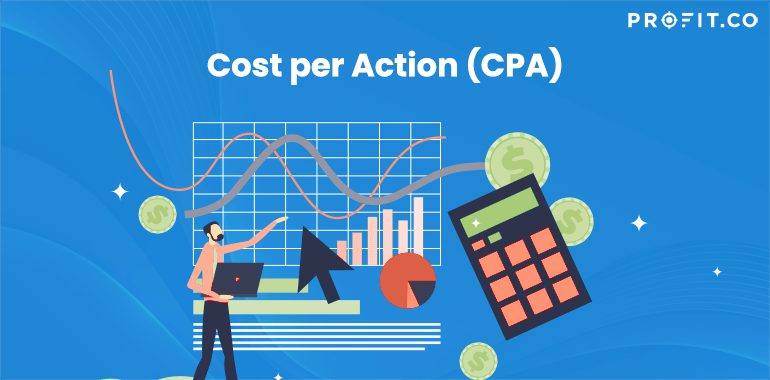The Cost per Action is a payment model used in online advertising, in which the payment is based only on actions that are qualified as a return – for example, registrations in different websites or sales.
Before starting a Cost per Action campaign on a website, a cost-per-action agreement will be made between the two parties, namely, the website and the advertising company. The most common actions that are included in such an agreement are, as we previously mentioned, registrations and sales.
Naturally, a click is not seen as an action when talking about Cost per Action. Clicks come in handy when we want to set up a Cost per Click campaign on our website.
The Benefits of Cost per Action
Of course, the advertiser is the one that will have the most benefits – while the website owner will have the task of leading its users towards the advertiser’s services. Basically, if the website does its job, then the advertiser will pay.
The Cost per Action is also one of the preferred campaigns of the advertisers, as there are no risks involved. First of all, the advertiser is the one that decides which actions qualify for payment during the campaign.
This means that the other part of the agreement, the website owner in most cases, will only get paid for the leads that result in one of the actions stated in the cost-per-action agreement.
The Formula
In order to come up with the Cost per Action of a certain campaign, we have to divide the cost by the number of actions/ acquisitions. For example, if $100 is spent for a campaign and it gets only 10 actions, then the Cost per Action of that campaign would be of $10.
If we are to place Cost per Action on a map, it would be at one of its ends, with Cost per Click in the middle, and Cost per Impressions at the other end. This is because, as we’ve said, the advertiser does not take any risks – instead, the publisher is the one that’s risking here.
So, if the conversion rates of the publisher’s website are not good enough in order to generate actions leading towards the advertiser’s products or services, then the publisher won’t see much of the commissions.
The Bottom Line
The Cost per Action metric is useful, especially for advertisers. By using it, they can be sure that their money will go into advertising that has a rate of return, and not into advertising that might have a rate of return.
After all, paying for your content to be displayed on certain websites is not enough to increase your own website’s conversion rate – but paying only when your conversion rate spikes means that your investment is partially returned.
Naturally, this is good for website owners and bloggers as well, as they don’t have many options to generate revenue early on. For example, a Cost per Action campaign on a website that’s mainly writing articles and having no profit is always a good thing for the content creator.
Basically, most of the affiliate market nowadays is based on Cost per Action.
